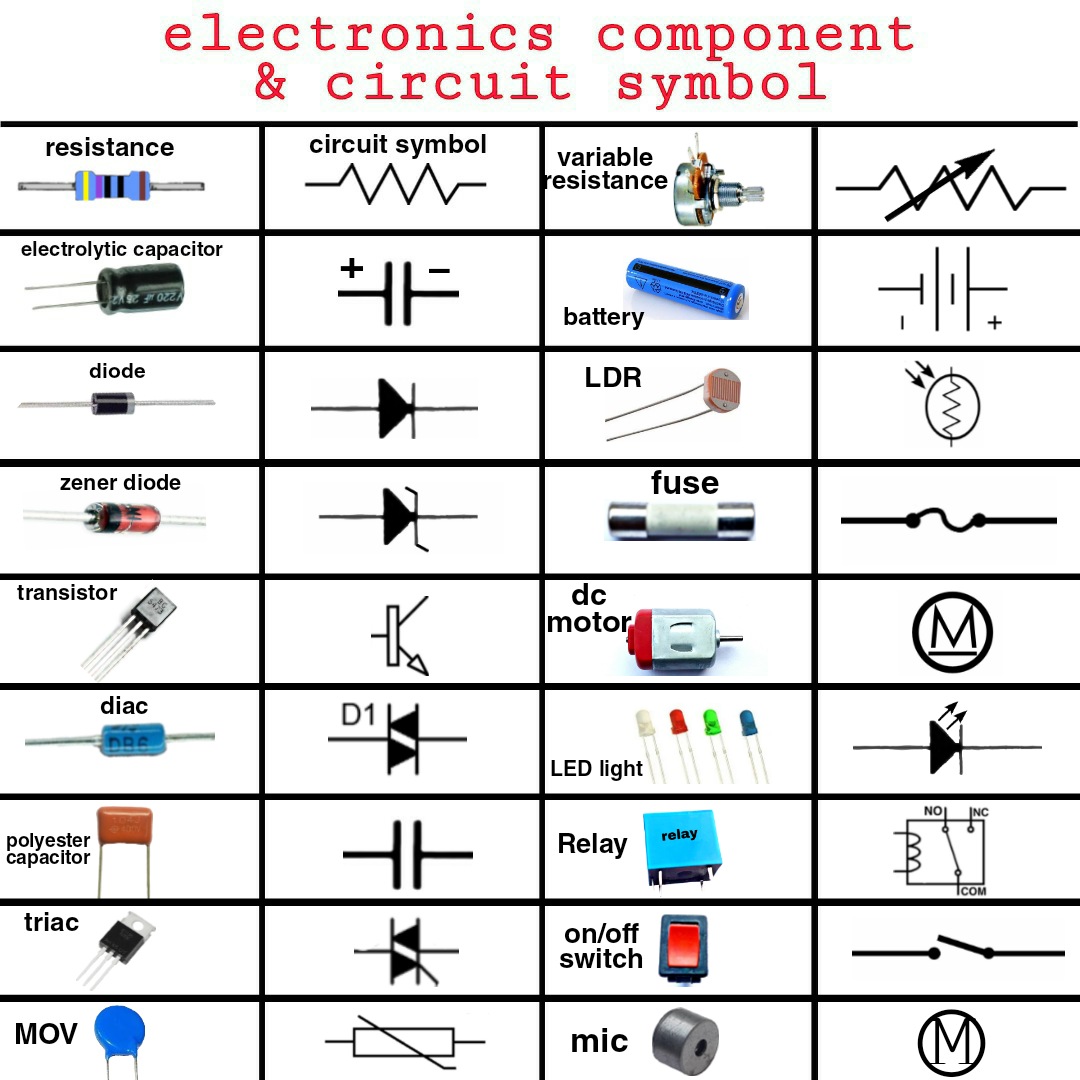Ever wondered what makes your smartphone tick? Or how that tiny remote controls your TV across the room? The answer lies in the intricate world of electronic components, tiny building blocks that form the foundation of modern technology. Understanding these components and their symbolic language is like unlocking a secret code, revealing the inner workings of everything electronic.
From the simplest circuits to the most complex systems, electronic components work in harmony, each playing a crucial role. They are the fundamental ingredients in the recipe for any electronic device. This exploration into the realm of basic electronic component identification and their symbolic representation will equip you with the knowledge to decipher circuit diagrams and comprehend the magic behind electronic devices.
The history of electronic components is a fascinating journey of innovation, beginning with simple devices like vacuum tubes and evolving into the incredibly complex integrated circuits we see today. Early electronic symbols were often pictorial representations of the component, evolving over time into standardized abstract symbols recognized globally. These symbols are essential for clear communication and efficient circuit design across different languages and cultures.
The importance of standardized electronic component symbols cannot be overstated. Imagine trying to build a complex circuit with each engineer using their own unique symbols – chaos would ensue! Standardized symbols ensure that everyone, from students to seasoned professionals, can interpret circuit diagrams accurately, facilitating collaboration and innovation.
One of the primary challenges in working with electronic components is selecting the correct component for a specific application. Understanding the characteristics of each component, its limitations, and its symbolic representation is crucial for successful circuit design. Misinterpreting a symbol or using the wrong component can lead to malfunctioning circuits or even damage to equipment.
A resistor, symbolized by a zigzag line, controls current flow. A capacitor, represented by two parallel lines, stores electrical energy. A diode, depicted by a triangle and a line, allows current to flow in only one direction. These are just a few examples of the fundamental building blocks of electronics.
The benefits of understanding electronic components and symbols are manifold. Firstly, it empowers you to troubleshoot and repair electronic devices. Secondly, it opens doors to designing and building your own circuits. Finally, it provides a deeper appreciation for the technology that permeates our lives.
To delve deeper into electronics, start with simple circuit diagrams and gradually increase complexity. Experiment with breadboards and kits to gain hands-on experience. Online resources, textbooks, and simulation software can be valuable tools in your learning journey.
Advantages and Disadvantages of Miniaturization
| Advantages | Disadvantages |
|---|---|
| Smaller and lighter devices | Increased heat generation and difficulty in handling |
| Reduced power consumption | Higher manufacturing costs and complexity |
Best practices include organizing your components, using proper soldering techniques, and carefully checking your work. Real-world examples of electronic components in action are everywhere – from the microchips in your computer to the LEDs in your light bulbs.
Common challenges include component failure, overheating, and short circuits. Troubleshooting techniques and preventative measures are crucial for mitigating these risks.
FAQ: What is a resistor? What is a capacitor? What is a diode? What is a transistor? What is an integrated circuit? What is a breadboard? What is a multimeter? How do I read a circuit diagram?
Tips and tricks for working with electronic components include using anti-static wrist straps, organizing components in labeled containers, and using a magnifying glass for fine detail work.
In conclusion, understanding basic electronic components and symbols is like gaining fluency in the language of technology. It empowers us to interact with the electronic world in a more meaningful way. From repairing a broken gadget to designing cutting-edge technology, this knowledge is essential in the 21st century. The benefits are immense, from enhanced problem-solving skills to a deeper appreciation of the intricate workings of the devices we rely on daily. Embrace the challenge, dive in, and explore the fascinating world of electronics – it's a journey of discovery that will continue to reward you for years to come. So, start learning today and unlock the power of electronics!
Nuss nougat creme kaufen the ultimate guide to finding your perfect spread
Ann arbor cannabis your guide to dispensaries
The heartwarming impact of liedtext guten morgen sonnenschein
Electronic Schematic Symbols And Abbreviations - Khao Tick On
Basic Electrical And Electronics Symbols - Khao Tick On
DIAGRAM Timer Schematic Diagram - Khao Tick On
Electronic Components Name Abbreviations and Symbols List - Khao Tick On
Label The Following Features Of A Circuit - Khao Tick On
Electrical And Electronic Components Symbols - Khao Tick On
Basic Electronic Components And Their Symbols - Khao Tick On
10 common electronic components and their symbols - Khao Tick On
Schematic Symbols Used In Circuit Diagrams - Khao Tick On
Arduino robotica Arduino en 2020 - Khao Tick On
Electronic Symbols And Names - Khao Tick On
Basic Important Electrical Symbols and Electronic Symbols - Khao Tick On
basic electronic components and symbols - Khao Tick On
Electronic Circuit Components Symbols - Khao Tick On
Schematic Diagrams Circuits Symbols - Khao Tick On





.jpg)








